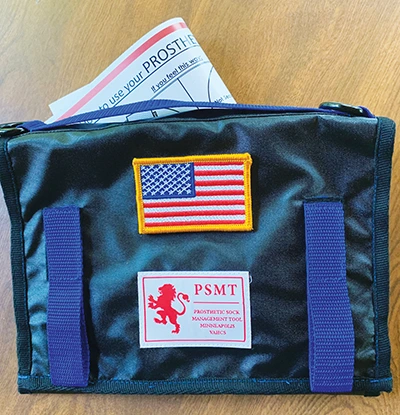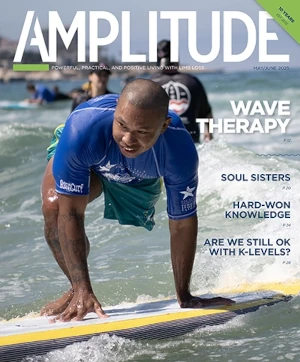Of the many adaptations new amputees have to make, managing fluctuations in residual limb volume may be the trickiest. It takes huge amounts of mental energy to add and subtract prosthetic socks throughout the day to maintain good socket fit—especially early in the recovery process from limb loss, when limb size and shape are least stable.

Enter the Prosthetic Sock Management Tool (PSMT). A new innovation from the VA’s Minneapolis Adaptive Design and Engineering (MADE) program, the PSMT helps new (and even not-so-new) amputees keep skin sores, chafing, and other miseries at a minimum.
Billie Savvas Slater, the researcher who developed the PSMT, was motivated to find a solution after seeing scores of VA patients grow frustrated over the ongoing battle with socks. She also felt the tool would support clinicians, helping patients maintain good habits after leaving the clinic and reinforcing best practices. “It allows me to do my job better,” one VA prosthetist told her. Even family caregivers stand to benefit, Slater says.
All 26 VA sites with Amputation Rehabilitation Coordinators already have access to the full PSMT. Other VA locations will receive a poster-sized version of the infographic to display in their amputee clinics. And the PSMT will soon be featured on the VA’s Diffusion Marketplace, making it available to prosthetists throughout the VA system.
The PSMT consists of several different components, including:
- Three connected sock-storage pouches that organize socks by thickness
- An easy-to-use infographic with directions for correct sock usage and limb care
- An instructional video available via the internet
- Reminders to check for comfort and fit three times daily




